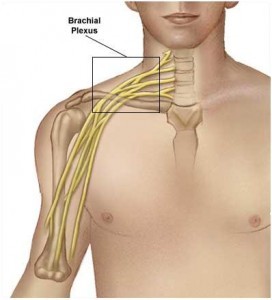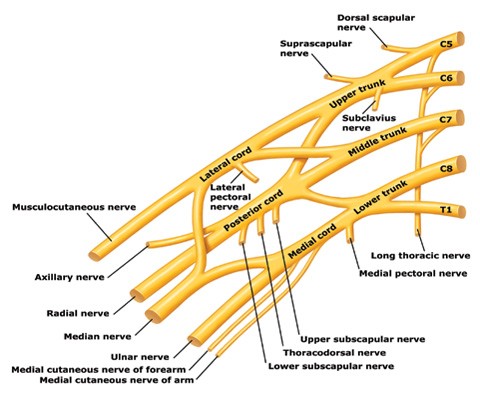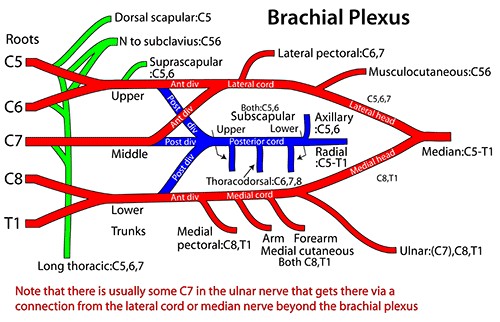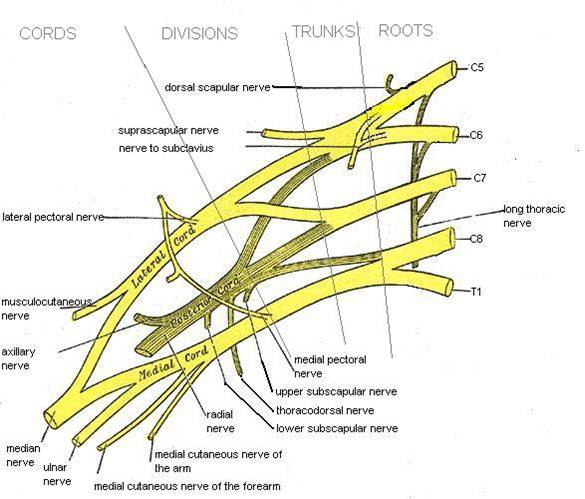The Brachial Plexus
Definition
A network of nerve fibres that supplies the skin and musculature of the upper limb.
It begins in the root of the neck, passes through the axilla, and enters the upper arm.
Formed by the anterior rami (divisions) of the cervical spinal nerves C5, C6, C7 and C8, and the first thoracic spinal nerve, T1.
Structure
The brachial plexus is divided into five parts
roots
trunks
divisions
cords
branches
Roots
The ‘roots’ are formed by the spinal nerves
At each vertebral level, paired spinal nerves arise. They leave the spinal cord via the intervertebal foramina of the vertebral column.
Each nerve then divides into anterior and posterior nerve fibres.
The roots of the brachial plexus are formed by the anterior divisions of spinal nerves C5, C6, C7, C8 and T1.
The posterior divisions go on to innervate the skin and musculature of the trunk.
After their formation, these nerves pass between the anterior and medial scalene muscles to enter the base of the neck.
Trunks
At the base of the neck
The roots of the brachial plexus converge, forming three trunks.
Superior trunk: A combination of C5 and C6 roots.
Middle trunk: A continuation of C7.
Inferior trunk: A combination of C8 and T1 roots.
The trunks begin to move laterally, crossing the posterior triangle of the neck.
Divisions
Within the posterior triangle of the neck,
Each trunk divides into anterior and posterior divisions. - three anterior and three posterior nerve fibres
These divisions leave the posterior triangle and pass into the axilla region.
They recombine in the next part of the brachial plexus.
Cords
Once in the axilla, they combine together to form three nerves - named by their position relative to the axillary artery : Lateral cord, medial cord and posterior cord.
The important nerves from the brachial plexus :
Long thoracic nerve - from the roots of C5,6,7 roots
Dorsal scapular nerve from the root of C5
Suprascapular nerve from upper trunk
Nerve to subclavius from upper trunk
Medial pectoral nerve from the medial cord
Lateral pectoral nerve from the lateral cord
Upper subscapular nerve, thoracodorsal nerve, and lower subscapular nerve from posterior cord
the lateral cord continues as musculocutaneous nerve
the posterior cord continues as axillary nerve and radial nerve
the medial cord continues as ulnar nerve, medial cutaneous nerve of the forearm and medial cutaneous nerve of the forearm
Median nerve is formed by fibres from both the lateral cord and medial cord
Applied Anatomy
Upper Brachial Plexus Injury – Erb’s Palsy







